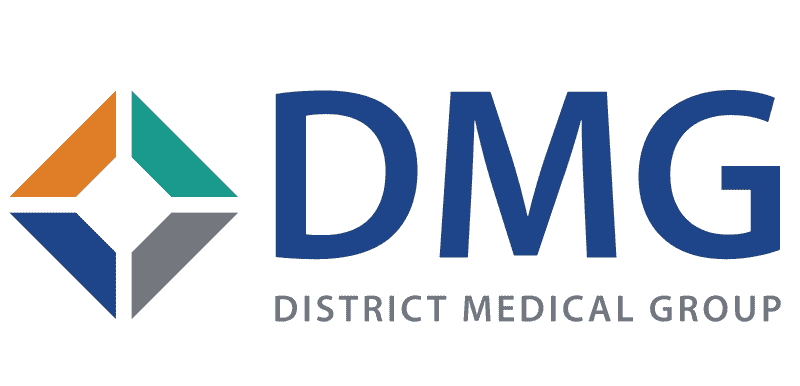Reducing Your Risk of Cervical Cancer
The early stages of cervical cancer don’t have any symptoms, and that’s why it’s so important to get your well-woman exam annually. If you are aged 21-30, pap smears are recommended every three years
The early stages of cervical cancer don’t have any symptoms, and that’s why it’s so important to get your well-woman exam annually. If you are aged 21-30, pap smears are recommended every three years
By Troy Nelson, MD, pediatrician and medical director, DMG Children’s Rehabilitative Services

The baby formula shortage in the United States has prompted the need to find solutions to decrease the risk of a shortage impacting the country again. According to a recent article by NPR, often overlooked in the race to fill the gap is the most natural alternative: mother’s milk.
The American Academy of Pediatrics (AAP) recommends “exclusive breastfeeding for about six months, followed by continued breastfeeding as complementary foods are introduced, with continuation of breastfeeding for one year or longer as mutually desired by mother and infant.” Despite this recommendation, 2018 data published by the Centers for Disease Control and Prevention (CDC) revealed that only one in four babies born in the United States met this target; in Arizona, 50 to 60 percent of babies met this target.
So, why do mothers stop breastfeeding? According to the CDC, how long a mother breastfeeds is impacted by:
The Surgeon General’s Call to Action to Support Breastfeeding as well as medical experts in women’s health and pediatrics continue to push education about the benefits of breastfeeding. Let’s look at the benefits to you and your baby.
According to HealthyChildren.org, an AAP website, breastfeeding provides emotional, mental and physical health benefits to a mother, including:
Release of good hormones: During breastfeeding, hormones such as prolactin and oxytocin are released which produce peaceful, nurturing, and relaxing sensations that promote bonding with your infant.
Quicker uterus recovery: Oxytocin, released during breastfeeding, helps return the uterus to its regular size more quickly and can reduce postpartum bleeding.
Potential reduced risk of disease: Some studies have found that breastfeeding may reduce the risk of developing breast and ovarian cancers, cardiovascular disease, rheumatoid arthritis, and type 2 diabetes.
Natural contraception: Exclusive breastfeeding delays the return of the mother’s menstrual period, which can help extend the time between pregnancies.
Less expense: Formula can cost four to ten dollars a day or $1460-$3650 annually.
Ease of preparation: Human milk directly from the mother is the right temperature, so no taking time to warm bottles of formula.
Ease of travel: Whether you are going out to run an errand or for the day, no need to bring a bag of temperature-controlled formula.
Environmentally friendly: You get the satisfaction of knowing you are not contributing baby formula cans and packaging to landfills.
Breast milk provides a baby with ideal nutrition and supports growth and development. According to the CDC, the benefits of breast milk for your baby include:
The best source of nutrition for most babies, because as the baby grows, the mother’s milk will change to meet the baby’s needs.
Shared antibodies from the mother with her baby
Supports proper brain development through docosahexaenoic acid (DHA), a polyunsaturated fatty acid found in breast milk
Helps protect babies against some short- and long-term illnesses and diseases and decreases the risk of:
If you have questions about breastfeeding or want more information, please contact your women’s health provider or pediatrician. We’re here to help you make the right decision for you and your baby and provide the support and resources needed for you to care for your newborn.
By Dana Putman, FNP-C, family nurse practitioner

September is Ovarian Cancer Awareness Month. According to the American Cancer Society, more than 20,000 women will receive an ovarian cancer diagnosis in 2021, and nearly 14,000 women will die from this form of female reproductive system cancer.
Fortunately, the rate at which women have been diagnosed with ovarian cancers has been decreasing slowly in the past 20 years. Driving awareness and empowering women with the knowledge of how to decrease their risks and identify ovarian cancer symptoms early has helped significantly.
According to the American Cancer Society, 85 to 90 percent of ovarian cancers originate from epithelial cells, which cover the outer surface of the ovary. About 52 percent of all epithelial ovarian cancers are serous carcinomas.
Because epithelial ovarian cancers are the most common, let’s take a closer look at risk factors for these types of ovarian cancers.
Getting older – The risk of getting ovarian cancer increases with age, unless a woman has had her ovaries removed. Most women diagnosed with ovarian cancer have completed menopause and are age 63 or older.
Being overweight or obese – Women with a Body Mass Index (BMI) of 30 or higher have a higher risk of developing many cancers, not just ovarian cancer. In addition, obesity can negatively impact a woman’s chance of surviving ovarian cancer.
Having children later or not having a full-term pregnancy – Women who have their first full-term pregnancy after age 35 or who never carried a pregnancy to term have a higher risk of ovarian cancer.
Having a family history of breast, colorectal or ovarian cancer – If one’s mother, sister or daughter has had ovarian cancer, the risk is higher. Increased of risk of ovarian cancer can also come from the father’s side of the family. In addition, breast and colorectal cancers can be caused by an inherited mutation (change) in certain genes that cause a family cancer syndrome that increases the risk of ovarian cancer. To learn more about family cancer syndromes and gene mutations, visit the American Cancer Society website.
Using fertility treatment – In vitro fertilization (IVF) has been linked to increased risk of ovarian cancer, while some types of fertility drugs have not. If you are considering or have had fertility treatments, speak with your women’s health physician about your risk factors.
Having had breast cancer – A family history of breast cancer may be linked to inherited mutation in the BRCA1 or BRCA2 genes, which are also linked to ovarian cancer.
Smoking – While smoking is not directly linked to ovarian cancer, it has been linked to an increased overall risk of developing some form of cancer.
While some of the risk factors are not within our control, decreasing the risk of ovarian cancer is to some extent. However, a woman must make the right personal and life choices for her and her family, so some or all these options may or may not be chosen.
Pregnancy – Women who have carried a baby to full-term by the age of 26 have a lower risk of ovarian cancer. The risk goes down with each full-term pregnancy.
Breast feeding – Breast feeding may reduce the risk of ovarian cancer even further.
Birth control – Using oral contraceptives (birth control pills) decreases the risk of ovarian cancer; the longer oral contraceptives are used, the more the risk decreases. According to the American Cancer Society, tubal ligation (having fallopian tubes tied) and short use of intrauterine devices (IUDs) have also been associated with a lower risk of ovarian cancer.
Hysterectomy – Removing the uterus without removing the ovaries reduces the risk of ovarian cancer by more than 30 percent.
Your first step in reducing your risk of ovarian cancer is getting an annual well-woman exam. During this exam, you will share your medical history as well as that of your family, discuss your methods of birth control, receive a physical examination, and discuss your health goals. We are here to help you understand your risks and create a care and lifestyle plan to support you in living the life you choose.
By Richard Fowler, MD, internal medicine physician

Did you know that you make choices every day that impact your risk of cancer? Research shows that approximately 50 percent of cancer cases are preventable with knowledge and early detection being key.
February is Cancer Prevention Month, and below are seven tips to help you decrease your risk of cancer.
While smoking is most associated with lung cancer, bladder, breast, cervical, colorectal, esophageal, mouth and throat cancers have also been linked to tobacco use.
Did you know that in Arizona 85-90 percent of the 365 days in the year are sunny? While our attractive climate makes enjoying the great outdoors inviting, the risk of skin cancer, including melanoma, is greater. Skin cancer is not only the most common form of cancer in the United States, but it’s also one of the most preventable. Be certain to protect your skin from the sun’s ultraviolet radiation using a sunscreen of 30 SPF or higher and reapply every two hours.
A balanced diet that includes plenty of beans, fruits, vegetables, and whole grains and limits red meat is recommended to improve your overall health and decrease the risk of cancer as well as other conditions such as cardiovascular disease. In addition, delete processed meats from your diet, and limit alcohol consumption to no more than two drinks daily if you are a man, and one for a woman. Alcohol consumption increases your risk of breast, colorectal and liver cancers.
Exercise has numerous health benefits, including decreasing stress, increasing energy and positive attitude, supporting a healthy weight, and strengthening the immune system. Did you know a minimum of 30 minutes of physical activity daily can also decrease your risk of cancer? Lack of exercise and obesity have been linked to breast and colorectal cancers, and some evidence has revealed a connection to lung and pancreatic cancers.
High-risk strains of the human papillomavirus (HPV), which is spread through skin-to-skin contact during anal, oral, and vaginal sex, have increasingly been found to cause many types of cancer, including liver cancer. Use protection during sex, know your partner’s sexual history, and limit your number of partners.
Certain viruses have been linked to cancer but can be prevented through vaccinations. For example, approximately one-third of liver cancers are connected to hepatitis B (HBV) and hepatitis C (HCV) viruses. Vaccinations are available and recommended for certain age and/or risk groups; speak with your primary care provider (PCP) to determine if vaccinations are appropriate based on your age, risks, and other factors.
If you do not have a PCP, find one and not only schedule an annual exam but share your complete medical history as well as that of your family. Your PCP will partner with you to assess your risk of cancer and other diseases, schedule appropriate screenings such as a mammogram, PAP smear, and/or colonoscopy, and design a health and wellness plan that is right for you.
To find a District Medical Group PCP near you, click here.
By Brett Willden, DO, family medicine physician

Have you gained the “quarantine 15?” If you have, chances are your partner has put on some pandemic pounds as well. According to the National Institute of Health (NIH), an individual’s weight loss or weight gain is strongly affected by one’s romantic partner; in fact, having an obese spouse increases one’s own risk for obesity by 43 percent.
The good news is pursuing weight loss together will increase your chances of achieving your goals. A recent European Society of Cardiology study presentation found couples who hold each other accountable for healthy lifestyle changes had a better shot at shedding that quarantine 15 compared to control groups that tried affecting change on their own.
February is American Heart Month, and, of course, Valentine’s Day is February 14th. What better way to improve your heart health and show your love for each other than starting your weight loss journey together?
Recognize your differences.
Men and women gain and lose weight in different areas of the body as well as in different ways. For example, the way metabolism works is different in men and women; water retention impacting weight is also a primary difference between the sexes. Speak with your primary care provider (PCP) to understand your differences so you can each support and empathize with each other as well as have realistic expectations.
Plan meals together.
Decreasing calories does not have to mean going hungry or eating foods you don’t like. Plan your meals, shop for ingredients, and cook meals together to increase the enjoyment and benefits of your weight loss journey.
Get active together.
For some, “exercise” is a dreaded word. Plan ways to get active that you can do together, so the focus becomes on time together- something you like doing- instead of exercise. For example, take your dog for long walks together; sign up for dance lessons, karate, or another activity in which you are both interested together.
Hold each other accountable thoughtfully.
Be a cheerleader for your partner, not a cynic. Putting a person down, pestering or criticizing are not optimal ways to provide support and hold your partner accountable. Keeping a journal of what you eat and your activity levels is often recommended as part of a weight loss program; share your journals with each other, talk about what worked and what did not that day, and identify solutions together.
Communicate with each other.
As you begin your weight loss journey together, share with each other your concerns, vulnerabilities, etc. Talk about what causes you to overeat, so you can support each other along the way as those instigators show up. For example, “emotional eating” is common, and a stressful day can ignite a desire to eat more and/or choose “comfort” foods. Understanding these areas of vulnerability will help each of you be aware and support each other during those challenges.
By Dana Putman, FNP-C, family nurse practitioner

Did you know January is Cervical Cancer Awareness Month? According to the American Cancer Society, cervical cancer is one of the most common causes of cancer death among women; however, cervical cancer is highly preventable and treatable. With the increased use of Pap test screening, the death rate has dropped but has remained consistent for the past 10 years.
Cervical cancer occurs in the cells of the cervix, which is the lower part of the uterus that connects to the vagina. Strains of the human papillomavirus (HPV), a sexually transmitted disease (STD), play a role in causing most cervical cancer. In a small percentage of women, HPV survives for years and contributes to the process that causes cervical cells to become cancerous.
In its early stages, cervical cancer often has no signs or symptoms. In more advanced stages, cervical cancer symptoms may include:
As with many diseases, screening, and early detection and diagnosis are key to optimal health outcomes. You can reduce your risk of cervical cancer by:
Screening can prevent most cervical cancers by finding abnormal cervical cell changes (pre-cancers) so that they can be treated before they have a chance to turn into a cervical cancer. Most cervical cancers are found in women who have never had a Pap test or who have not had one recently.
As with many diseases, risk factors for cervical cancer include things within your control as well as factors you cannot control. To decrease your risk of cervical cancer, focus on making changes to those factors you can possibly change.
We’re here to help you understand cervical cancer and control your risk factors. For more information about cervical cancer or the HPV vaccination or to schedule your annual well-woman exam and screening, please contact a DMG primary care provider.
By Faith Cutrona, FNP-C, family nurse practitioner

October is Breast Cancer Awareness Month, and as a primary care provider and woman, sharing information to help women understand the importance of early detection is the most important care I provide. The more each patient is educated, the greater the chance that she will get regular exams so breast cancer- or another disease- can be caught early.
According to the American Cancer Society, breast cancer……
Remember, if detected early, the breast cancer survival rate greatly increases. Women who get breast cancer screenings decrease their chance of dying from breast cancer by 30 percent. Breast cancer screening saves lives, and getting an annual mammography is the single most important thing a woman can do to lessen her chances of dying from breast cancer. Mammography can detect cancer at early stages before a lump can be felt or symptoms are experienced.
An annual mammography is recommended for women age 40 and older and may be recommended sooner if the patient has had cancer or if a history of cancer is in the family. Understanding and sharing your complete family medical history with your primary care provider (PCP), therefore, is critical. In addition to annual mammography, your PCP will also recommend you do self-exams of your breasts at-home and can help you understand how to do these exams.
A breast screening are also called a “screening mammogram,” which is the type of mammogram ordered when the patient has no symptoms and/or signs of changes in breast tissue. A mammography is a fast procedure (about 20 minutes), and discomfort is minimal for most women. During a mammography, a low-energy x-ray is used to examine the breast for early signs of breast cancer. The small amount of radiation the patient is potentially exposed to is so small that the benefits outweigh the risk.
3D mammography is being used increasingly, especially for women with dense breast tissue. FDA-approved, 3D mammography takes pictures of thin “slices” of the breast from different angles, and computer software is used to reconstruct an image. In contrast, a standard mammography takes a single image.
If changes in one or both breasts are detected, a diagnostic mammogram will be ordered. Changes in breast include:
If breast cancer is detected early, a mastectomy or total breast removal can be avoided. Localized cancers can be managed through other treatments, which may include a lumpectomy, radiation and/or chemotherapy.
The key is early detection. Schedule your annual exam with your PCP today, and include breast screenings in your wellness plan.
By Lauren Lambert, FNP-C, family nurse practitioner

First introduced when baby boomers began turning 50, September is Healthy Aging Month. While September marks “back-to-school” for children, we adults can use this time to learn some new lessons to support our overall health and wellbeing.
As a primary care provider (PCP), I support the health and wellbeing of adult patients, and each patient is different. However, one thing remains the same: our health is dependent on physical, emotional, and mental wellbeing. Here’s some tips to support each of these areas for healthy aging.
Stay on top of your annual wellness exams and screenings. As we age, the types of screenings recommended change and include:
For all the above, if you have a personal or family history, your physician may recommend tests or screenings begin earlier or be done more frequently.
Staying active is exercise for your body and brain and helps reduce stress.
See old friends as well as make new ones; socializing is great for the brain and supports emotional wellbeing. In addition, you may find others with whom to enjoy exercising and new activities.
Getting the right amount of sleep is important throughout our lives. As we get older, ensuring we get enough sleep- but not excessive- is important to refresh our bodies and minds.
